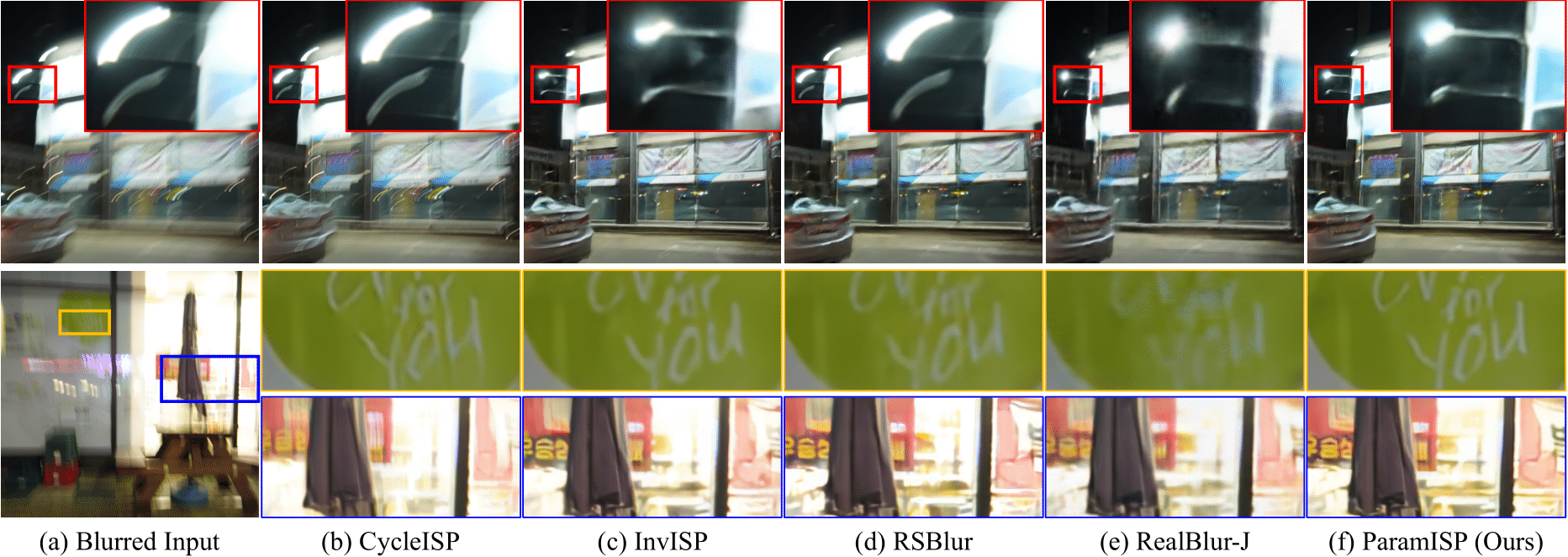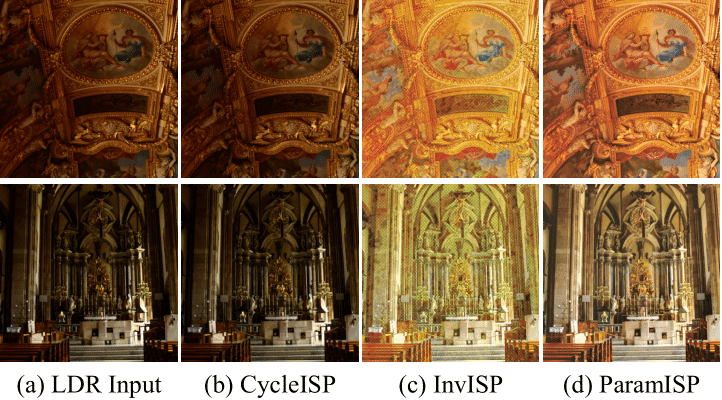Abstract

Method
 Overview of the proposed ParamISP framework. The full pipeline is constructed by combining learnable networks (ParamNet, LocalNet, GlobalNet) with invertible canonical camera operations (CanoNet). CanoNet consists of differentiable operations without learnable weights, where WB and CST denote white balance and color space transform, respectively.
Overview of the proposed ParamISP framework. The full pipeline is constructed by combining learnable networks (ParamNet, LocalNet, GlobalNet) with invertible canonical camera operations (CanoNet). CanoNet consists of differentiable operations without learnable weights, where WB and CST denote white balance and color space transform, respectively.
 Architecture of ParamNet. (a) Given camera optical parameters, ParamNet estimates optical parameter features used for modulating the LocalNet and GlobalNet. (b) In order to deal with different scales and non-linearly distributed values of optical parameters, we propose to use non-linear equalization that exploits multiple non-linear mapping functions.
Architecture of ParamNet. (a) Given camera optical parameters, ParamNet estimates optical parameter features used for modulating the LocalNet and GlobalNet. (b) In order to deal with different scales and non-linearly distributed values of optical parameters, we propose to use non-linear equalization that exploits multiple non-linear mapping functions.
Given a target camera, our goal is to learn its forward and inverse ISP processes that change with respect to camera parameters. To accomplish this, ParamISP is designed to have a pair of forward (RAW-to-sRGB) and inverse (sRGB-to-RAW) ISP networks. Both networks are equipped with ParamNet so that they adaptively operate based on camera parameters. In ParamISP, we classify camera parameters into two distinct categories: optical parameters (including exposure time, sensitivity, aperture size, and focal length) and canonical parameters (Bayer pattern, white balance coefficients, and a color correction matrix). To harness the canonical parameters, our ISP networks incorporate CanoNet, a subnetwork that performs canonical ISP operations without learnable weights. For the optical parameters, we introduce ParamNet, which is the key component to dynamically control the behavior of the ISP networks based on the optical parameters.
Results
Qualitative
1. Inverse (sRGB → RAW)

2. Forward (RAW → sRGB)

Quantitative

Applications
1. RAW Deblurring

2. Deblurring Dataset Synthesis

3. HDR Reconstruction

4. Camera-to-Camera Transfer

Citation
@inproceedings{kim2024paramisp,
title={ParamISP: Learned Forward and Inverse ISPs using Camera Parameters},
author={Kim, Woohyeok and Kim, Geonu and Lee, Junyong and Lee, Seungyong and Baek, Seung-Hwan and Cho, Sunghyun},
booktitle={Proceedings of the IEEE/CVF Conference on Computer Vision and Pattern Recognition},
pages={26067--26076},
year={2024}
}